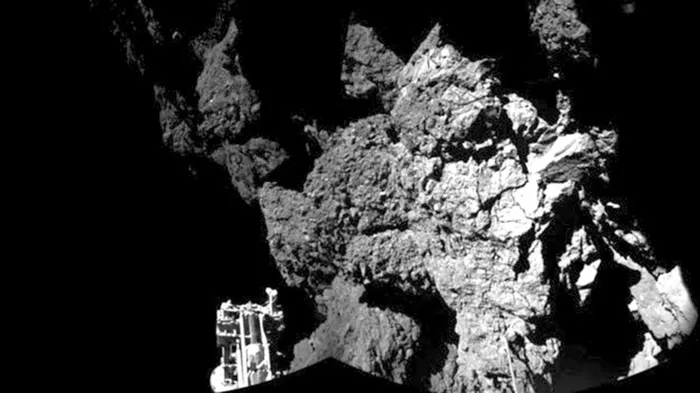‘Hello Earth! Can you hear me?’

File photo: The lander - the first mission to land on a comet, this one travelling as fast as 135,000 kph - initially bounced and landed in a position too shadowy to power its solar panels. File photo: The lander - the first mission to land on a comet, this one travelling as fast as 135,000 kph - initially bounced and landed in a position too shadowy to power its solar panels.
London - Sitting on a flying lump of rock 180 million miles away, a probe the size of a washing machine has woken up.
In one of the most eagerly greeted communications in space history, the European Space Agency received an 85-second communication from its celebrated Philae lander.
The message came as a surprise. The Philae lander went into hibernation seven months ago, shortly after performing the extraordinary feat of landing on a speeding comet.
Scientists’ hopes of unlocking some of the solar system’s oldest secrets seemed to have been dashed when Philae – a 15-stone, 3ft robot – toppled into a crater on the comet 67P/Churyumov-Gerasimenko. Its solar panels fell into shadow, meaning it could not power its scientific instruments.
The comet has since moved nearer to the sun and Philae has enough power to work again. An account linked to the probe tweeted the message, “Hello Earth! Can you hear me?”
The probe’s batteries ran down in November after 60 hours of rushed readings, and a series of spectacular photographs. But at 9.30pm on Saturday, mission control in Darmstadt, Germany, received the data transfer that has reignited the scientists’ hopes they will be able to see whether comets were the source of life on Earth. They had already completed a spectacular feat. After two decades of planning and a 4-billion-mile chase, they became the first team to place a probe on a comet.
The £1-billion mission was described as trying to land a fly on a speeding bullet.The scientists had always hoped the lander would switch back on.
Now, at 133 million miles from the sun – half the distance of when the lander switched off – it appears the solar panels have absorbed enough light to power the machine.
The mission’s British chief scientist, Matt Taylor, said he felt “absolute elation” at the news.
Daily Mail